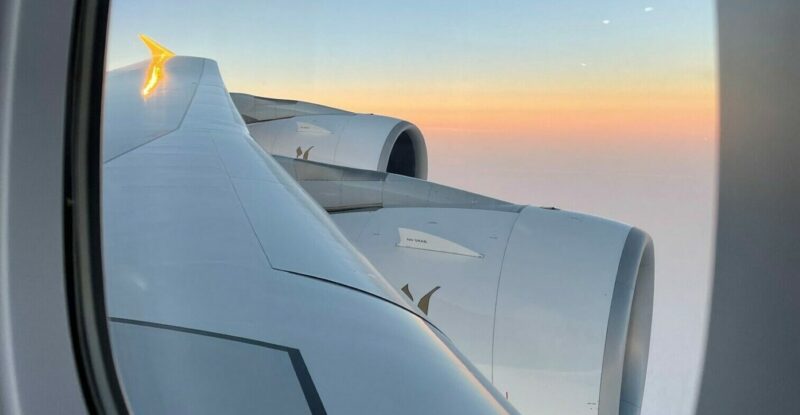When the first iPhone was launched in 2008, it was only capable of painfully slow 2G data speeds. That same year, AeroMobile launched its first inflight 2G connectivity services on board an Emirates Airbus A340-300. While mobile phones have progressed through 3G and onto various iterations of 4G and soon 5G technologies, inflight roaming services have lagged behind at 2G speeds.
That finally changed in December of last year as AeroMobile launched 3G mobile connectivity service on board an airberlin Airbus A330, but is it too little too late for passenger adoption? Not according to Kevin Rogers, CEO of Panasonic Avionics unit AeroMobile. He sees something of a renaissance just now beginning, even as passengers grow accustomed to using inflight wifi.
“What we tend to see is that at the moment, the total number of users, the total number of passengers actually using the phone service, has increased marginally,” says Rogers on the switch to 3G service. “We’d expect that because the number of passengers using it is a function of price points and so on. But the amount of usage of the service…is a factor of two to three times higher, and that usage is primarily data.”
Passengers who use the 3G service are meaningfully changing their usage habits. “There will be a number of users who use significantly more [data] because they’re doing stuff that they couldn’t do before, and the system is fundamentally capable of allowing more data to flow over it,” says Rogers.
To date, approximately 10% of AeroMobile’s connected aircraft are utilizing the new 3G system (which transmits over the same Panasonic Ku-band connectivity pipe that supports inflight wireless Internet). “At the moment, they are primarily new installs,” says Rogers.
“Airberlin was [a] good example earlier on where they had taken delivery of their aircraft with connectivity and those aircraft are equipped with 3G from the first installation. At the moment, the installs are very much bias towards new installations of connectivity for those aircraft, whether they be linefit or retrofit. The upgrades will start to happen, probably, in the next few months.”
As for the retrofit process in switching from the original 2G system to 3G, Rogers suggests it’s a rather simple process. “It’s fairly easy, because you’ve already got the antenna on board, so you’re talking about removing an existing picocell and replacing it in the rack with a 3G version of that. So it’s a fairly straightforward process. All your leaky feeders you’ve got on board the aircraft remain as-is.”
Rogers would not disclose any specific airlines planning upgrades to 3G, but says all of the major airlines currently deployed with 2G are looking into and planning upgrades. “I think it’s fair to say that all the airlines we are installed on are interested in upgrading. It’s just a question of when can they start.”
Not all AeroMobile customers can make an easy upgrade to the 3G system, however. To date, 80% of the exsting install base operate over Panasonic’s high-speed Ku pipe, leaving about 20% operating over low-bandwidth L-band. Rogers stresses that any airline taking delivery of the new 3G solution would do so over Ku, as L-band does not provide sufficient bandwidth to make a meaningful impact.
The main hurdle keeping usage lower than AeroMobile would like remains the price point. “The pricing is still at the high end,” says Rogers. While several mobile carriers have introduced lower pricing for inflight data use, the vast majority still charge exorbitant rates. For instance, without a corporate roaming plan, AT&T charges $0.01 per KB, making even the most basic of data use impractical.
Despite high roaming costs, Rogers says US passengers actually make up an extremely large chunk of the user base. Armed with corporate data roaming packages, US business travelers on foreign airlines with AeroMobile’s system use data liberally, furthering the argument to overturn current DOT regulations prohibiting mobile connectivity in American airspace.
Featured image credited to Jeremy Dwyer-Lindgren










